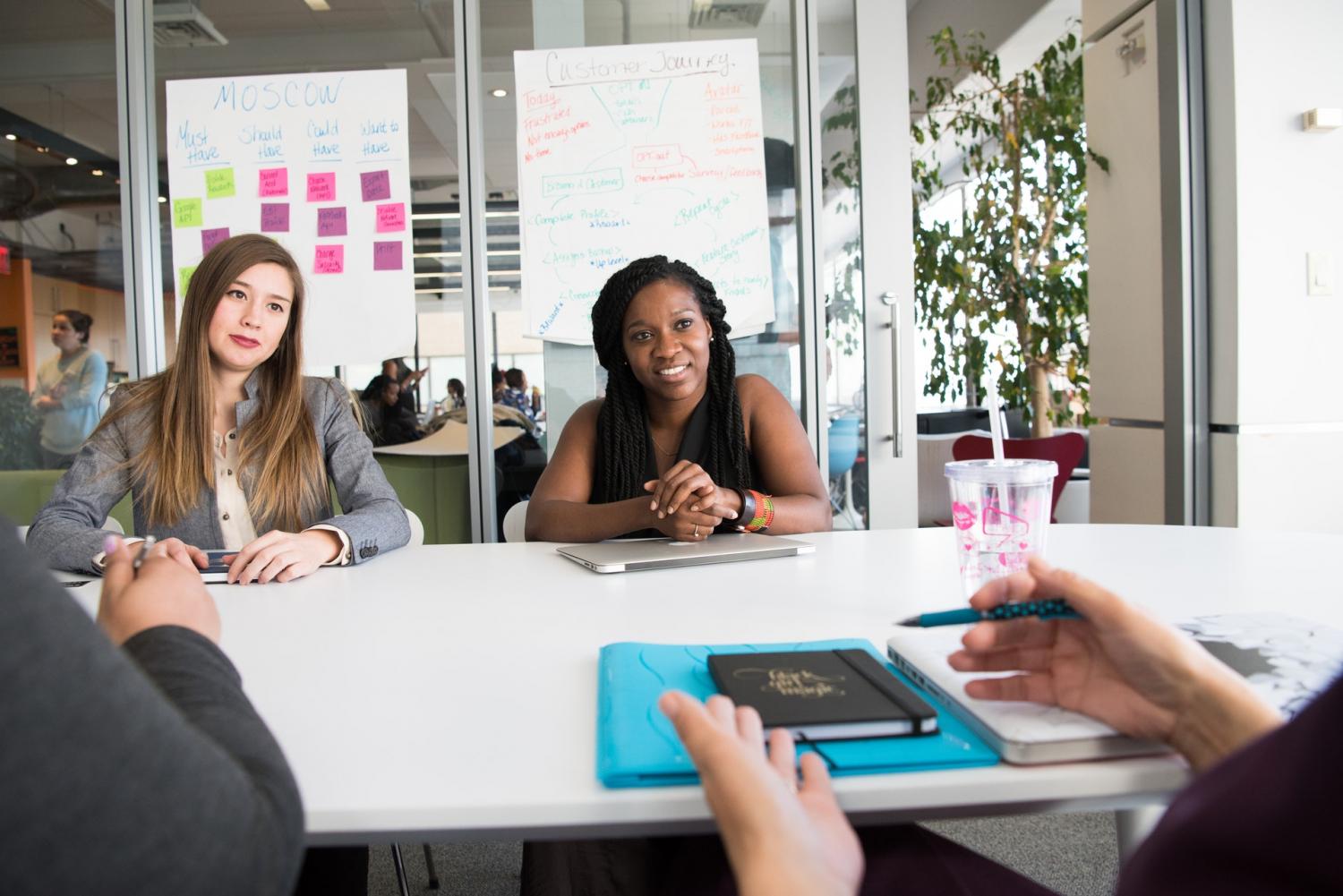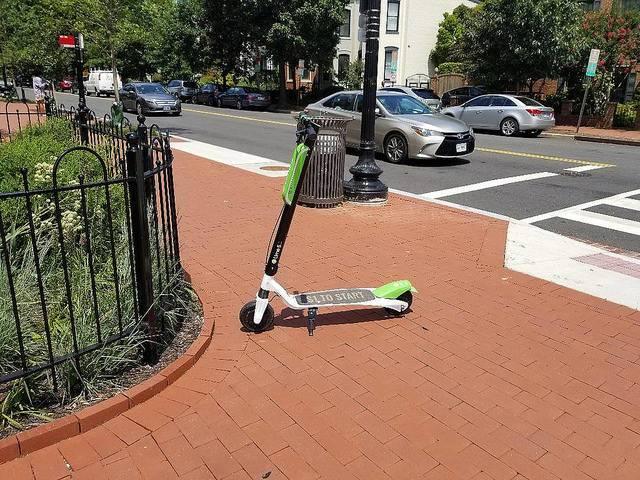What is the Social Responsibility of Social Media?


Do digital companies have a duty to curate content that some find alarming? That’s the current dilemma of social media businesses Facebook, Twitter, YouTube, Instagram, Spotify, and other platforms, which have self-defined as “agnostic” distributors—that is, neutral carriers not responsible for the content published through their channels and networks. These iconic brands, avatars for the enhanced exercise of freedom of speech on a scale previously unimaginable in the history of communications, now find themselves targets of increasing criticism for purveying content that is perceived as damaging, even dangerous, by their global community of users. What is the social responsibility of social media?
What’s at stake is the ongoing conflict between the First Amendment guarantee of freedom of speech, a right often under attack throughout its long history, and a contemporary culture that permits—even rewards—extreme, inflammatory commentary by measures of views and click-throughs, and amplifies it to an unprecedentedly large audience through the Internet.
Critics argue that like publishers, these “distributors” are responsible for the content they carry and present, if even they don’t create it. Companies argue that it is not their right or duty to censor third-party content.
Of course, like all companies, these businesses have standards that can be referred to. And these “community standards” are increasingly being belatedly invoked as the limits of free expression have stretched to the breaking point, with a growing negative pushback against tech companies that once seemingly could do no wrong in the eyes of their enthusiastic users.
Item: Twitter finally joined its tech industry peers in deleting some content produced by Infowars, a site specializing in conspiracy theories, hate speech, and harassment of its perceived enemies. YouTube, Facebook, Apple, and Spotify all invoked their “community standards” as the reason for deleting that site’s comments.
Item: Amazon deleted products on its site that featured Nazi and white supremacist symbolism after their presence was pointed out to the online retailer by activist groups. The company said it removed products that “violated [its] policy against product listings that promote hatred, violence or discrimination.”
The U.S. is unique in having a First Amendment. Read broadly, it calls for no “abridgement” of speech. Historically, the common sense rule regarding speech that leads to prohibited or even criminal action has been applied, best expressed in the maxim that yelling “fire” in a crowded theater leads to public disorder and life-threatening action. For many European countries, with the experience of fascism and genocide in their modern histories, speech is regulated to prevent subsequent social unrest. For example, Google operates in Europe under different codes of privacy than in the U.S. (What to make of Germany’s recent relaxation of the general ban on Nazi symbols in video games, now grouped with other exceptions such as academic studies, films, theater plays, historical exhibits, and other cultural expressions? The use of generally forbidden imagery will be determined on a case-by-case basis, says the German government. Is this a sophisticated upgrade to “deal responsibly with difficult subjects,” as Felix Falk, head of the gaming industry lobby, says? Or an invitation to the global alt-right to bait the general public with anti-Semitic views?
What’s also at stake here is the brand reputations of these tech companies. Questions about data privacy, the commercialization of private data, revenge porn, blatant disinformation, and outright threats have spurred a variety of rules and laws to curb unlimited freedom of expression through digital distribution channels, and have created a cloud of concern over the once golden-haloed firms. The answers to these questions have real consequences in share prices, employee activism, and future workforce recruitment as well as lawsuits, unwanted government regulation, and user un-subscriptions.
I’m looking forward to the case studies that will be written to analyze how the big tech brands navigate the increasingly stormy waters of taking stands by defining standards, and maintaining their integrity and reputation while doing so.
Domino's Pizza's Unique Path to Public-Private Partnership


Pizza companies, like all fast-food favorites, come and go over the years, defined by waning sales, changing appetites and sometimes, contentious politics.
Take for example Papa John’s, which is now in a fight for its life after plummeting sales and board-room battles have nibbled away at its global revenue. The fact that squabbles between the owner and board can continue to define the future of franchise growth and success is a powerful statement about how much customers truly invest in their favorite brands.
But the same can be said for America's second-largest pizza chain, Domino’s Pizza, which recently made national news when it took an entirely different tack on the issue of company investment and engagement.
Earlier this year, the Delaware town of Milford became the test baby for Domino’s new line of business. No, it isn’t a new take on the pizza pie. It’s potholes.
The company that brought us bread twists has recognized that customers are a lot happier when they know the brands they support invest in their communities as well.
As the UK-based organization, Reason Digital noted in 2017, “Corporate Social Responsibility (CSR) is an issue that companies can no longer ignore.” The study goes on to note that “studies by Sankar and Bhattacharya in 2001 found that positive CSR is seen as contributing to a consumer’s positive self image.”
Companies like Deloitte have underscored the importance of public-private partnerships for years, driving initiatives that have helped reenergize education programs across the globe and at the same time, enlightened students in the value of participating in local communities.
In this case, there’s something smartly symbolic in fixing the roads that lead customers to and from your door – especially if the potholes you’re fixing are ones you could legally, well, ignore.
Customers can nominate their community to have the holes fixed. Domino’s then allocates up to $5,000 to get those irritating holes patched through public-private partnership with the local city or town.
So far, crews have visited communities in California, Texas and Georgia. There's no statistics yet to indicate whether Domino's CSR initiative has boosted sales, or spearheaded more public funds toward city infrastructure improvements for that matter.
There are questions, though, as to whether public-private partnerships that take some of the load off of governments always help. Will company-trained crews that don't have the expertise in road construction be able to ensure the holes are filled to the same caliber as city- or county-paid contractors? How far will $5,000 go to ensuring the integrity of streets that have been battered by exceptional weather conditions or increasing traffic as small communities grow? And who organizes and pays for the upgrades to that work the next time around?
Still, in a time of shrinking local budgets and a growing focus on the nation's crumbling infrastructure, it's noteworthy when a company is willing to step up and support local communities. And as Domino's has no doubt found, it's often the unique "think-out-of-the box" initiatives that can be the most successful in reinforcing connection with loyal customers.
Image credits (Flickr): Seattle Municipal Archives; Eric Fischer
How the Right Screen Can Increase a Home’s Energy Efficiency


It is an intrinsic part of the contemporary American lifestyle: sturdy and flexible to the touch, the window screen has been playing an essential role in American households for more than century – and transforming living environments ever since.
Most of us, if pressed to describe what it does, would probably call it by its favorite attribute: It’s a bug screen, the last respectable defense between the home and the miniature intruders that lie just beyond our bedroom window and our warm, summer evening comfort.
The window screen is engineered to do more than block out mosquitoes, spiders and pesky flies. It’s a critical part of the ventilation system of a house, particularly in the summer. And when a house – and its windows – are constructed well, those open, protected apertures can often reduce the dependency on high-emissions, expensive air conditioning systems.
We all know that heat rises. But what is often overlooked is that heat doesn’t just rise to the top of a room or a space, it can move all around. This is because warm air has a higher density than cooler air, so it tends to “stack” and fill spaces more efficiently than cool air.
That’s why it’s often hard to cool down a hot room with one large screened window. For the cooler air to enter and the hot air to leave, there must be an exit area that can help displace the hot air. Windows that are designed with two openings, for example, a pull down window at the top and a frame that raises from the bottom are often the most successful means for ventilating a room. These double-hung windows allow the air to circulate and “push” the hot air out, thus making room for a cooler, less dense breeze to enter.
And a home occupant’s own sophisticated cooling system helps. When we sweat, our skin is cooled by that light breeze we feel from a well-ventilated room and the passage of warm air rushing to an open, alternative opening. That is why screens that are made with efficient, light materials that are the least obstructive to air flow are also an essential part of a house’s ventilation system.
Solar screening can block out as much as 90 percent of sunlight and may be ideal for rooms that face hot sunlight in the afternoon. Doing so can keep the room cooler.
Window screens: Design says it all
Today’s ergonomic home relies on lighter and more efficient materials. Finding the right combination of windows and window screens for a house is essential not only to appearance and beauty but to that very purpose that screens fulfill: a comfortably ventilated, easy to operate home that reduces dependency on carbon-emitting technologies.
The finer mesh that is used in many screening products these days offers more light and airflow. At the same time that efficiency helps to keep out tiny bugs that could slip through larger apertures.
Newer technology has led to a number of new concepts in window screening, each with their superior advantage and appeal:
- Removable screens build on the conventional concept of an insect screen: a barrier that can be removed, cleaned and reinserted with minimal work, but keeps a room ventilated and bug-free. Tightly woven mesh that is adapted to meet the lighting demands of the room work best with this kind of screen. And, as explained above, openings work best in pairs, so fitting a room with more than one window that can let the room ventilate is ideal with these kinds of screens.
- Larger screen doors that allow for passage in and out of a room (such as a dining room or an atrium) keep bugs out but without impeding air flow. Newer models are made with the convenient feature of a self-closing track to ensure the screen isn’t accidentally left open.
- Retractable screens that work in synchrony with the window and allow for free-flowing air when the window is open and disappears from sight when it’s closed are great for are great for homeowners seeking easy-to-use solutions. Requiring no storage, little cleaning, they are often the most efficient when it comes to cooling down a room quickly and economically by allowing cooler air to enter and warmer air at the top of the room exit.
Efficient window screening that increases light in the room, is made from finer mesh, and is more durable works in tandem with well-built, leak-free windows. Picking the right window design and set-up for your home that allows for proper air flow is an essential part of reducing cost and increasing your home’s energy efficiency.
Image courtesy of Pella Windows and Doors.
The State of Corporate Responsibility in South Florida: First Impressions


Miami is beginning to shed its reputation as just a beach town, and is making its mark as a city with a burgeoning art scene, and a growing startup landscape. Yet, I find what is still often overlooked is the sheer quantity of companies that are based in Miami, many of which use the city as a gateway to Latin America and the Caribbean. And with such a unique corporate ecosystem, it is inevitable that corporate responsibility (CR) plays a role locally and abroad.
So what does the CR ecosystem look like in Miami and who are the main players? What are companies’ CR priorities and are they collaborating? As a CR professional who recently moved to Miami, I’ve found myself asking these questions. This article is my personal reflection on the state of CR in Miami today and serves to introduce a series of articles that will be published by the members of a newly formed network, "Corporate Responsibility Miami," as we work to build a thriving CR community in our growing corporate ecosystem.
Over the last two decades, CR has become commonplace among corporations around the world, and for some, even indispensable. Shareholders and consumers care more than ever that the companies they support engage in business activity that protects and benefits its people, our society, and our planet. Companies, large and small, are becoming increasingly aware that CR is not just a marketing play anymore, but a strategic investment that can have tangible impacts on their returns.
In fact, 90 percent of global Fortune 350 companies now publish annual CR reports that outline the positive impact of their efforts. The landmark study “Project ROI”, published by IO Sustainability, found that strong corporate responsibility practices that focus on the triple bottom line - people, planet and profits - can increase market value by up to 6 percent. They can also increase revenue by up to 20 percent, reduce staff turnover rate by up to 50 percent and increase employee productivity by up to 13 percent.
The companies that operate out of South Florida are not immune to these trends. On the contrary, with the prevalence of several natural and systemic issues like sea-level rise, housing affordability and income inequality, there is a growing need to engage our local private sector in solving some of South Florida’s most protracted problems.
As we start to explore the local CR reality, a few trends appear:
- There is a large volume of international companies with regional hubs in Miami that serve Latin America and the Caribbean, but South Florida doesn’t seem to be an immediate strategic priority.
- There are a few sectors that are more visible than others in the corporate responsibility space locally, namely finance, tourism (cruise lines and hospitality), athletics, technology and telecom companies.
- There is an untapped opportunity and interest to increase and sustain the social impact of the private sector in South Florida and Latin America through increased coordination and collaboration.
The need for businesses to be engaged corporate citizens is even more important in a region where the nonprofit sector is underfunded. As a region with the eight highest income inequality in the country, South Florida’s nonprofit sector has seen comparatively low levels of investment. From 2008-2013, the Miami-Fort Lauderdale-Pompano area received only $23.59 in grants per capita, a low figure compared to the Chicago region ($64.78), the New York City region ($101.96), and the San Francisco region ($216.79). The result is disheartening for the region where major challenges persist and, in some cases, worsen.
In light of these trends and the fact that Miami is a transient city in constant flux, the need for a consistent and coordinated CR network is more important than ever. As a result, we have launched a new network for corporate responsibility professionals in South Florida that acknowledges and leverages the three points mentioned above.
Our newly formed network, Corporate Responsibility Miami (CR Miami), was created out of a desire to better understand the local CR ecosystem and create opportunities for increased impact through support, collaboration, and exchange. CR Miami aims to create a digital and physical space for CR professionals to meet, share, learn and collaborate in support of the sustainable impact they are already working on.
We’ve been grateful already to have members join us from various industries such as finance, real estate, telecommunications, as well as 3BL Media, a key partner and sponsor of this blog series. In the coming months, you will hear from different members of the network as they reflect on their unique roles in the CR ecosystem in Miami, Latin America and beyond.
We are excited to continue growing our network! If you find yourself in Miami, please join us for one of our monthly networking meetings where we share best practices and ideas with colleagues. And if you can’t make your way to Miami, please be sure to check in on our regular blog posts right here on TriplePundit.com.
With contributions from: Santiago Bunce Co-founder CR Miami and Alejandra Winter Community Principal, CIC Miami and Co-founder CR Miami.
Stay in touch with us! Follow us on Twitter: @OfficialCRMiami.
Join CR Miami and TriplePundit at 3BL Forum: Brands Taking Stands – The Long View, just outside Washington, D.C. on October 23-25, 2018. Over three fast-paced and dynamic days, the conference will showcase corporate voices on bridging the divide between investor relations and corporate responsibility, the “why” and “how” behind corporate decision-making on corporate responsibility, sustainability and when to take a stand. Receive a 25% discount using this code PUNDIT2018VIP when you register here.
Image credit: Ryan Parker/Unsplash
A Model for Wildfire Disaster Relief


Like other areas of disaster relief, wildfires, particularly in California, have become an increasingly common occurrence. According to a recent piece in The Atlantic (“Has Climate Change Intensified 2017’s Western Wildfires?”), the total area burned in the western United States over the last 33 years was double the size it would have been without any human-caused warming. Increased temperatures = increased likelihood of fire.
But, when you examine disaster-related funding in the last five years, funding directed at wildfires is $13.1 million, while hurricane-related funding totals $480.6 million (this includes grants and in-kind donations). So how can we explain the different levels of support for varying types of natural disasters? Perhaps length of time. Consider the volcano situation that has been occurring for many months in Hawaii. Have you seen companies donating to organizations helping in this area of relief, or, even better, has your company offered a matching program towards this effort? Perhaps not. Some disasters, like wildfires and an active volcano, have a long time frame. It can be longer until you can go into recovery mode, since it isn’t over quickly (and its end can’t be predicted). Whether it is a hurricane or an earthquake, some disasters can happen quickly, and thus be easier to recruit support for immediate recovery and long-term rebuilding.
What can we do to better address wildfires? The first step is understanding the impact on these communities: cities and counties will end up paying for at least half of the hundreds of billions of dollars that can go into wildfire recovery in a single year. As the LA Times observes, putting out the fires represents only 9% of the total cost of the wildfire. One group that has witnessed this large burden, and has taken steps to help in the rebuilding efforts, is the legal community. By working with local government bodies and community foundations, legal aid can help to ensure insurance claims are filed correctly, protect local residents from fraud, and more.
Claire Solot from the Bigglesworth Foundation in Northern California spoke with me several weeks ago about ongoing recovery efforts from past fires, and with current events I think the information she shared with me could be very beneficial for those asking themselves what they can do.
California legal aid organizations have already established exemplary collaborative initiatives based on past fires, which ensures coordinated efforts that are needed in the immediate aftermath of the wildfire are possible. Following the large earthquake in Napa several years ago, five key legal organizations formed the Bay Area Resilience Collaborative, the only organization of its kind in the U.S.. The collaborative works to bring in subject matter experts and provide extensive training for legal aid organizations, among other things. An excellent example of their collaborative efforts is the development of disaster-specific training for lawyers wishing to volunteer, but do not have knowledge of this area. The Legal Aid Association of California (LAAC)developed recordings of trainings so that volunteers were qualified to help. The collaborative then set up hotlines for wildfire victims, coordinating volunteers to staff those phone calls, then connect them to qualified volunteer lawyers. Finally, regional associations like Legal Aid Sonoma County have a physical presence in local assistance centers where they can also disseminate guidebooks and other materials that were developed for victims to educate them on legal vulnerabilities after disaster.
The legal aid committee also started a collaborative fund housed at the California Bar Foundation, now California ChangeLawyers, knowing that just because the fire goes out, doesn’t mean the funds should dry up. There is still a long road to recovery. Lawyers can serve as key players in the rebuilding after a wildfire, protecting those that could be victimized. A prime example is housing – as those that need new housing begin to explore options, policies, legislation and ordinances need to be in place to avoid scenarios where rent is increased, or unscrupulous contractors try to take advantage of the desperate. Looking forward, LAAC recently developed a document that details other exposed areas that legal aid can support, including identity theft, wage theft, price-gouging, and domestic violence which can increase after a disaster. The next step in this area is securing funding to support these areas after disaster, and training lawyers so that they are prepared to address these specific kinds of cases.
The biggest takeaway from my conversation with Claire is similar to those had around hurricane relief: there is a tremendous need for long term funding for rebuilding, and there needs to be a coordinated approach from local communities when it comes to relief and recovery. However, with some of these disasters that span numerous days, weeks, months, and with hundreds of billions needed to rebuild, other funding sources need to be considered. If we aren’t able to supplement city and county recovery spending, other crucial initiatives could fall behind. For a geographic area to rebuild, they need to physically rebuild homes, reignite the economy with infrastructure reparations, and rehab ecosystems.
As fires continue to rage throughout California, I’d encourage you to consider ways you or your employer may be able to help. With sometimes no end in sight, it is imperative for local government, community foundations, and legal aid organizations to feel supported to continue to aid their community and protect them from threats that will still exist when the wildfires end.
Lessons can be learned from all different types of disasters. The level of collaboration amongst the legal community in Northern California can serve as an excellent model for other areas of the country. The same legal risks exist after other types of disasters, and, as seen in the above example, there are many moving parts for relief that combine discussions with FEMA, volunteer training, and on-the-ground relief and resources. One thing remains the same, and that is the significant cost to rebuild. Without support, it is possible these affected regions could never recover. You can learn more about what you can do to help these efforts from the Center for Disaster Philanthropy.
Want to learn more about disaster relief across the sector? Check out Blackbaud's Disaster Relief Resources page.
Reposted from the npEngage blog and the 3BL Media newsroom.
Image credit: Bureau of Land Management/Flickr
Is Costa Rican “Pura Vida” Sustainability Realistic?


News stories that praise Costa Rica’s use of “100 percent renewable energy” for a growing number of days on end focus on the fact that the Central American nation generates a great deal of its electricity from wind power, solar, hydro and sugarcane. The equivalence of “electricity” with “energy” is often made, but make no mistake, for some uses such as cooking, heating, and transportation - natural gas, propane or conventional combustion engines are still the norm. A fair number of the diesel-powered buses and trucks are still running on older engines.
Add to that the beachfront ATV and jet-skis offered to tourists, and Costa Rica is fast approaching a conundrum: how can a country’s business community balance environmental impact and sustainability with the economic need to meet the growing the number of tourists eager to experience this tropical paradise.
Keeping the paradise “pure” as possible while still allowing access are places like Sensoria that offer the chance to enter the rainforest and experience its splendor with minimal footprint. Indeed, the guides were very insistent that we stay on the carefully laid-out paths and that we touched nothing - neither plant nor animal - except in designated areas where we were allowed – or even encouraged - to swim at the base of waterfalls. Most of these areas were kept in their natural states but one thermal pool did use a wooden barrier to create a larger soaking area.
Costa Rica embraces the night. Rather than light to the point of daylight clarity, the lower levels of illumination allow for visibility and do not spill outside the area where light is needed. On the coast where we stayed, the lights were yellow instead of white and kept at a distance from beach to avoid disturbing sea turtles.
I was there a week and never saw, or was offered, a plastic straw with my beverage. Are there lessons learned for businesses abroad, perhaps?
However, what about the people? While I have frequently been disappointed to see litter along roadways worldwide, Costa Rica’s cleanliness was impressive. The city of Liberia had a low amount of litter and graffiti and the countryside was virtually free of roadside refuse. Even the beaches, where things tend to wash up, had very little trash on the shore. Along the coastline in Guanacaste, there was remarkably little debris from “civilization” to be found.
There were often separate bike lanes along major roads but even on the smallest ones, drivers were courteous and slowed, stopped, went into the opposite lane for pedestrians and cyclists. Part of the reason travel times between places were longer than the distance would indicate was the fact that the “I have to get there NOW!” mentality of many nations was simply non-existent. We experienced many places where roadwork was being done to widen, or to add culverts and concrete pipes to channel water under, not over, the roadways. It is important to note that, when I made this observation, it was pointed out to me - and I verified - that the fatality and accident rates are actually quite high; often attributable to excess speeds and alcohol-related accidents.
In 1948, Costa Rica made the decision to eliminate its military and while there are police evident and highly visible, the re-focus of money and emphasis on education were clear. Even the smallest towns had schools, all of which were protected with fences and barriers, in part to prevent child trafficking that plagues other country. Students in uniforms could be seen walking to their buses, or on playgrounds or through open doors and windows sitting dutifully in their classrooms.
There is an astounding profusion of plant, animal, bird, sea and insect life everywhere. Life practically explodes in this climate to the delight of both locals (ticos) and tourists. On our way to visit one location the construction crew that was controlling one-lane-access as they worked on the other half of the road gestured above to that our driver and guide knew to stop to show us the first sloths we saw while there. In fact, we saw howler and spider monkeys, parrots, toucans, a pair of nesting Pacific Screen Owls, and other birds variegated squirrels, bats, crabs, a profusion of lizards ranging from tiny to black and green iguanas to crocodiles. Butterflies, dragonflies, beetles, leaf-cutter ants, red-eyed and blue-legged frogs, and, in the ocean, spotted eagle rays, a kind of small manta ray, several kinds of puffer fish, sergeant major fish, angel fish, trumpet fish, and needlefish.
Not surprisingly, the fertility of the land and the abundant water have made agriculture a big business in Costa Rica. Obviously known for fair trade coffee, bananas, pineapples and chocolate, we also saw sugar cane and cattle farms. We were surprised to see flooded fields growing rice and even a tilapia fish farm.
I witnessed how clear and clean air has aesthetic as well as health benefits. The lack of light and other pollution made the night sky spectacular. Our first night, at 4:00 AM, the stars glittered like diamonds on black velvet. And we could see across the water to land that was between 35 and 40 miles away, and mountains that were even further.
Pura vida, (the simple life) is more than just a catchphrase on t-shirts and tourist ads; it is how the ticos describe their lifestyle. In fact, I was surprised to hear it as a response when I said gracias to people. When people call you amigo there is a sense that they really mean it. The smiles of strangers who actually took the time and effort to remember our names when we saw them later in the week came off as genuine rather than creepy. This attitude extended all the way to the flight home, when we were told we could not bring our full water bottles through security, but were pointed to a section of plants where we should dump the water out. But the plants were beyond the security checkpoint so we were allowed to take them through and poured them out afterward. In such a welcoming and beautiful place, how could we do otherwise?
Pura vida, indeed.
Image credits: John Friedman
The Private Sector Is Crucial for Building a Diverse Workforce for the Future


By Barbara Whye, Chief Diversity and Inclusion Officer, Intel; Balaji Ganapathy, Head, Workforce Effectiveness, Tata Consultancy Services; and Kelli Wells, Executive Director Education and Skills, GE Foundation
The challenge of diversifying the tech workforce is confronting companies across sectors as more jobs are requiring computational thinking and digital fluency. Simultaneously, the demographics of the United States are changing rapidly, and companies are challenged with ensuring that the talent pipeline reflects those dynamic shifts. Developing a robust and diverse technical workforce in the United States is becoming a national priority as a result of the emerging technologies and their impact on industries.
Jobs across all industries will require a foundational 21st century skillsets such as digital fluency, innovation excellence, employability skills. The task at hand is to create equitable access to education and skills that are relevant and contextual not only to the jobs of today, but also those that are resilient for the workforces of tomorrow.
In May 2017, CECP: the CEO Force for Good launched the Systemic Investments in Equity, Talent, and Tech Accelerate Community. Led by Dr. Kamau Bobb, Georgia Tech, the Community convened 13 companies around investments in STEM education and tech talent pipelines using a systemic equity lens.
Why is our intentional focus on equity, and not equality? The working group believes equity is more fundamental than equality. It is possible to have equal distribution of something and still have unequal outcomes because of inequity. Having a computer science class, for example, in every high school is the equal access of a course. If the schools themselves are not equally resourced and capable to deliver that course, the learning outcomes will not be equal. The course has been equally provided, but the education system itself is inequitable.
Tata Consultancy Services (TCS) is seeking to adequately prepare students for what might lie ahead by adopting a multi-pronged, strategic, and systematic approach to support this transition into the new world of work. They have launched programs like IgniteMyFuture in Schools, which will engage 20,000 teachers and more than one million students over the next five years, and is offered free of cost to them and their school districts; and TCS goIT – a hands-on, mentor led program, which introduces students from underrepresented communities to the power of technology in solving real world problems.
Intel Corporation has made an intentional effort to partner with Historically Black Colleges and Universities (HBCUs). The Intel HBCU Grant Program is a three-year, $4.5 million program to encourage students to remain in STEM pathways, supporting students through scholarships, mentorships and a focus on workshops and activities that bring HBCUs and the technology industry together. The participating HBCUs include Florida A&M University, Morgan State University, Howard University, Prairie View A&M University, North Carolina A&T State University and Tuskegee University. The collaboration focuses on ensuring students are prepared with the relevant skills to enter the tech workforce. This program is part of Intel’s $300 million Diversity in Technology initiative, which supports a goal of reaching full representation of women and underrepresented minorities in the U.S. workforce by the end of 2018.
For more than 100 years, the GE Foundation has actively supported efforts to create a high-quality education pipeline for all students. Through its signature education and skills initiatives – Developing Futures™ and Developing Skills™ – the GE Foundation seeks to empower all students aged 14 to 24 to become globally productive citizens by providing access to learning experiences necessary for the workforce of tomorrow and addressing the anticipated global shortfall of 45 million workers in 2020. Through its Brilliant Boston initiative, the GE Foundation is working to bridge the gap between education and industry, classroom and career, and the economy of the future and the skills of today. Collectively, these efforts are preparing students with the skills to become the critical thinkers, problem solvers, and innovators of the future.
Corporations across the country are clamoring to find innovative ways to ensuring that American graduates are prepared to enter the workforce. Research shows that STEM and workforce/employment are the fastest growing focus areas for companies’ social strategies; between 2014 and 2016, the number of companies noting STEM as a priority focus area rose by 6.7 percent; those mentioning workforce/employment rose by 6.7 percent.
For corporations stateside, continuing to rely on predominantly white and Asian males is untenable. In addition, the social pressure for diversity in such a critical sector of American life is only likely to increase as the ethnic diversity of the country continues to increase.
According to the US Census, by approximately 2040, the majority of the population of the United States will not be white. People of color—Asian, African-American, and Hispanic people—will make up more than half of the total population and nearly 60 percent of children under 18 years of age.
What has been critical to making inroads is understanding that students must have an empathetic comprehension of what technology looks like--how to apply and innovate it so they can play an active role in shaping the tools of the future. What the Community found was that corporations are engaging in the equity, talent, and tech effort on a spectrum. There is an ever-present tension between self-interest to develop their talent pipeline and social responsibility to support the community. Companies need to recruit and retain talent. Companies also invest in informal learning programs for K-12 students as part of social responsibility initiatives, which simultaneously serve as long-term investments in a more diverse workforce.
While the range of investments made by companies is truly vast, there is room for improvement. One key opportunity is that corporate-sponsored STEM programming must be more aligned across internal departments and not driven in silos by the corporate social engagement department, human resources, or talent departments.
If your company is interested in learning more about this work, we invite you to visit cecp.co to learn more about CECP.
Image credit: Pexels
During 3BL Forum, CECP will host a pre-conference workshop that will bring together investor relations and corporate responsibility professionals to explore 'the new normal' of unlocking value creation through a long-term lens. The workshop features a presentation by a CEO who has changed a company's approach from a focus on quarterly earnings calls, and will also provide an inside perspective on the decision-making to focus on the long-term, challenges and barriers and transformative opportunities. Receive a 25 percent discount using this code PUNDIT2018VIP when you register here.
About the authors:
Kelli Wells
Kelli is the director for U.S. Education for the GE Foundation in Fairfield, Connecticut. Her responsibilities include managing educational partnerships which work with GE communities and leveraging best practices to implement educational strategies nationally. Kelli joined GE in 1995 as an investment representative with GE Asset Management.
Balaji Ganapathy
As the Head of Workforce Effectiveness, Balaji oversees the functions of Human Resources Business Consulting, Diversity & Inclusion, and Corporate Social Responsibility for over 35,000 employees of Tata Consultancy Services in North America. His primary responsibilities include coaching sales and business teams for business growth, driving talent management and employee retention initiatives, architecting the corporate sustainability strategy, and promoting an inclusive culture.
Barbara Whye
Barbara H. Whye is Intel’s Chief Diversity and Inclusion Officer and Chief Human Resources Officer for the Technology, Systems Architecture and Client Group (TSCG), the company’s largest business group. A champion of Intel’s culture of inclusion, with 21 years of experience, she develops strategies that accelerate progress and integrate diversity and inclusion across the ecosystem to enhance innovation and drive business results.
Investors Worth Over $6.7 Trillion Call for Stronger Palm Oil Standards


Institutional investors are calling on the largest certification body in the palm oil industry to strengthen its sustainability standards for the ingredient, which is now used in nearly half of all consumer packaged goods (CPG).
More than 90 investors, collectively managing over $6.7 trillion in assets, sent an open letter to the Roundtable on Sustainable Palm Oil (RSPO) last week—asking the multi-stakeholder certifier to beef up its production standards and enforcement. The letter reflects what these investors call a “disconnect” between corporate zero-deforestation commitments and the RSPO’s Principles and Criteria Guidance, which certifies palm oil as “sustainable” if it meets certain standards.
Up to $941 billion in assets worldwide are linked to commodities tied to deforestation, according to a 2017 report from CDP. Such a massive figure put companies and their investors on notice, and a host of major corporates have pledged to root out deforestation from their supply chains—which includes, among other things, sourcing sustainable palm oil.
“Our investment portfolios include companies that have significant exposure to deforestation risks and, therefore, have made robust no-deforestation policies and strong commitments to sourcing sustainably certified palm oil,” the investors wrote in their letter, coordinated by the sustainability nonprofit Ceres.
The group of hedge funds, pension funds, faith-based investors and other large asset managers said they’re concerned that the rigor of RSPO’s standards has not kept pace with corporate commitments. Namely, they called on the RSPO to increase protections for peatlands and high carbon stock forests, as well as address labor concerns such as children’s and worker rights.
“To move from policy commitments to implementation, companies need assurance that their palm oil supplies are deforestation-free,” Julie Nash, director of food and capital markets at Ceres, said in a statement. “Without that, their businesses are vulnerable to reputation and market risks.”
RSPO reviews its standards every five years, in accordance with ISEAL best practices, and the investor letter is one of thousands of public comments to its revised guidance, which is set to publish in November. “This new guidance has the opportunity to help companies implement no-deforestation pledges, but it must meet industry norms for zero deforestation,” Nash said.
RSPO ran two 60-day public consultation periods as part of its review process. More than 10,000 stakeholders commented on the first draft of its new guidance. The second-draft review—which concluded on August 2—attracted just as much feedback, if not more, an RSPO spokesperson told Sustainable Brands.
"Our Principles and Criteria review process is designed to allow members and stakeholders alike the opportunity to provide input on proposed updates to our standards,” the spokesperson said. “We welcome this diverse input and encourage it from all groups, including the signatories of the recent open letter. All comments submitted are carefully considered, with final revisions decided according to an inclusive decision-making process.”
The timing of the RSPO standards review is especially relevant as companies strive to achieve their zero-deforestation commitments by 2020 and governments seek to meet international pledges to reduce greenhouse gas emissions in line with the Paris climate agreement, Ceres said.
Deforestation is responsible for 10 percent of global GHG emissions, and the destruction of carbon-rich peatlands is of particular concern. Current RSPO standards allow member companies to clear peat soil where the peat is less than 3 meters deep, Mongabay News reported. The investors asked for a “revised definition of peat soil and guidance on phasing out development or replanting on peat soils,” as well as a ban on clearance in high carbon stock forests.
"Strengthening the RSPO standards is vitally important,” said Beth Richtman, managing investment director of sustainable investments for California’s public pension fund, CalPERS, a signatory to the letter. “Without stronger standards, companies trying to lower their risk and improve the sustainability of their supply chains are operating in the dark.”
RSPO now certifies around 19 percent of the $37 billion global palm oil industry—which is expected to reach up to $92.8 billion by 2021, as the ingredient is increasingly used in consumer goods ranging from foods and beverages to cleaning and personal care products.
While imploring the certifier for stronger production and human rights standards, investors insisted they’re not out to slam the RSPO. “We want the RSPO to succeed,” said Adam Kanzer, managing director of corporate engagement for Domini Impact Investments, another signatory. ”Investors strongly support many of the proposed amendments to the [guidance], but more work is needed to bring RSPO standards into compliance with corporate … commitments, as well as relevant ILO Conventions on child labor.”
Still, the investors warned that the RSPO—now the de facto name in palm oil sustainability certification—could be replaced if it can’t keep pace with companies’ needs. “Investors and the companies in the palm oil supply chain are looking to the RSPO to catch up to the current state of play in the industry,” said Leslie Samuelrich, president of Green Century, another investor signatory on the letter. “Without meaningful standards, companies will be forced to develop alternative paths for verification.”
Image credit: Flickr/Peter Nijenhuis
Editor's note: Since this article was published, we have received a statement on behalf of RSPO:
"Deforestation and carbon stock loss in carbon rich areas such as Latin America, subtropical Asia and Africa are mainly caused by the expansion of intensive agriculture. Palm oil, soy and cattle grazing are among the top drivers behind this expansion. RSPO fully recognizes the challenge of reaching 100% sustainable palm oil cultivation that respects biodiversity, natural ecosystems, deforestation, local communities, and workers in palm oil producing countries.
"We have embarked on a journey to make market transformation a shared responsibility and to find common solutions to issues within the industry. This is mirrored in the governance structure of RSPO, through its multi-stakeholder representation, and through the review process of its Principles and Criteria (P&C)."
Annoyed With Scooters? Responsible Growth Will Be the Key to Acceptance


Last week, the Los Angeles Times reported that electric powered scooters which users can rent by the minute from tech start-ups such as Bird and Lime are being defaced or destroyed by vandals, who appear to have a vendetta against this burgeoning form of personal and public transportation.
These thousand-dollar-plus vehicles have been set on fire, thrown into canals, snapped in half, tossed into the ocean off Venice Beach and been, in hopefully rare but exceedingly gross fashion, smeared with feces, according to the report. There’s even a dedicated Instagram account devoted to images depicting different modes of their destruction!
On the one hand, these scooters should be welcomed. They are small, efficient, and get people around urban environments quickly without either burning gasoline, or taking up parking spaces. On the other hand, many pedestrians haven’t taken kindly to being buzzed or hit by reckless riders on the sidewalk, nor have they been happy to trip over unattended scooters abandoned haphazardly by users once they’re done with them.
The annoyance factor is no doubt why these scooters have attracted the scorn of some, and why a proportion of them have met an untimely end. The public’s reaction has also forced a backlash against electric scooters from officialdom. Earlier this year, the city of San Francisco banned companies from operating powered scooters on city streets in response to complaints from people.
There could be a solution here to balance the obvious benefits with the downsides, so what can be done?
To start with, the problem is likely a side effect of the tech mantra: “to move fast and break things.” These electric scooters are, for sure, a disruptive technology appearing en masse pretty much overnight on city streets. For that reason, the Los Angeles Times article points out the introduction of these scooters is viewed by some as another example of how the tech industry has encroached upon the community without asking for permission.
And as with other tech startups that have moved fast (notably, Uber in the transportation space) at some point, notoriety demands a more thoughtful approach to market growth. This is driven in part by a public relations imperative, but it also tends to be forced by regulation.
San Francisco is imposing such regulation, and last week, Santa Monica, CA announced that it will too. In both cases, these cities are forcing a reset by taking a pilot program approach.
In the case of San Francisco, in June of this year, the San Francisco Municipal Transportation Agency (SFMTA) instigated the clumsily-named “Powered Scooter Share Program Permit” and according to the rules, there will be a 2,500 cap on the number of scooters allowed in the city - to be operated by a maximum of five companies.
Successful firms who have applied for a permit will most likely be allowed to begin operating in the city this month, though the terms require participants to pay an annual $25,000 fee to cover costs. In the evaluation process, SFMTA has required interested companies to provide a plan for pretty much the whole gamut of operations. Before awarding permits, officials will have reviewed each applicant’s plans for things such as safe riding and storage, distribution and maintenance, labor and hiring policies, through to community outreach and zero waste commitments. A “wild west” approach won’t fly.
And on top of regulation, other headwinds will likely face the young industry too - lawyers!
Bloomberg details that personal injury lawyers have scooters in their sights. The aforementioned pedestrian collisions and tripping hazards has led some lawyers to think a serious injury is just waiting to happen. While Bloomberg says there are no records of lawsuits being filed against either Bird or Lime, they say it’s just a matter of time, which in turn, is likely just a question of identifying where deep pockets are to be found.
So, lawsuits and regulations face the industry - which sounds pretty much like any other - but these electric scooter companies are perhaps only just having to grapple with these realities, and they will have their work cut out to find the smooth road ahead.
In which case, homegrown corporate responsibility is likely to be critical to their success too. Indeed, Lime and Bird already devote part of their websites’ to providing tips to users on how to operate safely, park responsibly and follow traffic laws. But how can they enforce rules, and where does their accountability begin and end? This will likely all be part of the evolution.
Of course, shared personal transportation is not a new thing by any means. Bicycle sharing programs have been around for several years and operate in hundreds of cities all over the world. Their introduction appears to have come with less of a backlash and perhaps that’s partly because people are just more familiar with bikes?
But beyond that, perhaps it’s because there is more apparent order with the bike sharing model. Bikes are stationed at designated locations - you pick up a bike from one location, and either return it there, or to another designated location - so they are less likely to appear lying around randomly. Bikes aren’t allowed on the sidewalk either. In short, this model appears to operate on a more predictable basis.
Clearly, one of the benefits of the electric scooter business model, though, is dropping them off wherever is maximally convenient for the user, but maybe stronger rules will have to apply on where they can be left. A letter to the San Francisco Chronicle this week suggested maybe one parking space per block could be dedicated to scooter parking. Dedicated stations would borrow from the bike sharing model but could be more frequent in distribution. That would require a public - private arrangement. Cooperation will be key.
But despite all these tribulations, the electric scooter is a compelling and convenient device from the user perspective and there are plenty of investment dollars lined up behind these businesses, too. With Uber and Lyft getting in the game as well, they aren’t going away. Nevertheless, responsible growth is going to be the key to securing acceptance of both local authorities and the public. These companies have a vested interest in achieving such acceptance - otherwise their assets may continue to be lost at sea.
Image credit: Mike Licht/Flickr
Without a Crystal Ball, Companies Need to Reset to Anticipate the Next Viral Video Crisis


Surely you have seen the videos over the past few years. During the spring of 2017, United Airlines’ reputation was battered after smartphone videos caught a passenger being roughed up after he was adamant that he would not give up his seat to accommodate another passenger. Starbucks felt compelled to close its retail stores for a half day after the infamous incident in which two black men had the Philadelphia police called on them while they were waiting to meet friends at a downtown location. That next infamous video could surface anytime. But are companies adequately preparing in the event such a snippet starts flying across Twitter or Facebook?
“Part of this problem is that CEOs are concerned that their companies might be the target of the next video view that as a random fluke,” said Barie Carmichael, co-author of the book, Reset: Business and Society in the New Social Landscape, published earlier this year by Columbia University Press.
“But, year in and year out,” Carmichael continued, “70 percent of business disruptions like these actually could have been prevented by actions taken under management’s control.”
Carmichael referenced research by the Institute of Crisis Management. The organization’s recent work concluded that seven out of 10 such crises were “smouldering problems” that could have been mitigated had management addressed these problems beforehand.
The argument is akin to putting out a fire - it is easy for a fire crew to line up all of its forces to stamp out that fire, when the reality was that better sprinklers, the removal of brush, and a “no bonfire” sign could have prevented an incident from occurring in the first place.
From Carmichael’s point of view, those preventative measures include involving the company’s board of directors at the very onset of formulating the organization’s strategy. And that strategy is no longer about products and services, new adjacencies, or a “blue ocean” framework - terms that have all floated in and out of favor through the C-suite over the years.
“The focus has changed from products and brands to the company itself, and the result is that companies have to make some hard decisions; and boards need to have an active role in such decisions,” said Carmichael. “Recruiting and retaining the high-expectations next generation workforce makes this a competitive imperative.”
Similar to an argument made last month during a TriplePundit interview with another corporate responsibility leader, it is time for boards to move away from their traditional role from “signing off” on decisions such as audit committees and strategic plans to “signing on” at the very beginning of a process.
Other corporate governance experts have made similar observations. Leading business advisor and author Ram Charan wrote Owning Up in 2009 in the wake of the global financial crises a decade ago. Charam argued many companies’ boards and management should have seen their downfall coming. He advocated for boards to be more proactive when assessing risks inherent in their strategies.
“The days of the board simply signing off on directives are over,” explained Carmichael, “as the data is clear that social, environmental and economic sustainability together are the path to sustainable growth - and that should be the board’s job to ensure this occurs.”
And going back to the crises that consumed the likes of United and Starbucks, Carmichael suggested that companies need to be aware of their social footprint.
“Just as companies are evaluating their carbon footprint to understand their environmental impact,” said Carmichael, “companies need to be aware of their social footprint and ensure that is embedded within their strategy.”
By not understanding a company’s social footprint and the effect it could have on a company’s social impact, companies could suffer consequences. Lacking a grasp on challenges such as diversity, or customers’ reactions to various policies, could lead to an incident akin to those that befell the likes of a United or Starbucks.
The result is the need to redefine the very concept of “risk management,” as it has been practiced for decades by the business community. As the author Peter Bernstein discussed, the concept of risk management dates as far back to 17th-century France, and is based on the probability of events such as uncertainty in financial markets, natural disasters or legal liabilities.
But in today’s business climate, this assumption about risk does not account for the increased complexity of companies’ products and services - not to mention the fact it only takes one smartphone video to blow up a company’s reputation in a matter of minutes. Hence the question that begs to be asked is, what are some of the social factors that could lead to such an incident occurring without warning?
Actually, those warning signs are most likely already there.
“The bottom line is that policies to anticipate risk using 20th century tools are not viable in this newly transformed landscape,” argued Carmichael. “We’re in the middle of a totally different paradigm in the 21st century.”
Carmichael argues there are new metrics with capabilities available to track and anticipate reactions from customers, stakeholders and companies in real time, as reliance on conventional actuarial data designed for conventional risk management assessment is no longer sufficient.
One problem is that too many company boards are focused on brand management and risk - and not the impact of a company’s actual policies on its employees or customers. “Social risk is just not the same as calculated risk,” added Carmichael.
Focusing on social risk could have nudged United to arm its gate agents with more authority to compensate passengers who bumped from a flight. “By haggling over hundreds of dollars, they placed United’s billion dollar brand in jeopardy,” wrote one observer in the wake of last year’s United flight 3411 crisis.
Unfortunately, images of public relations crisis often do not show up in any crystal ball until after the fact. Anticipating the impact of a company’s social footprint is not simple; indeed, it only looks easy in retrospect. Therefore, Carmichael says it behooves companies to undergo a critical reassessment with external partners who can take a look fresh at the company’s strategy and policies from outside of any corporate bubble.
For example, Southwest airlines had long ended the practice of overbooking flights. The company says it trains and empowers employees to handle a myriad of scenarios. Southwest also supports its gate agents with supervisor support and a hotline to help them work through difficult customer situations in order to find a solution. Gate agents can request support as needed, and are not burdened with operational rules that hamper arriving at fair solutions in the airline’s quest to satisfy customers.
Outcomes may not always be perfect, but at least Southwest can argue its employees are equipped to handle difficult scenarios. “We try our best to take all the pain points for customers that we possibly can and eliminate them from the travel experience, and I’m sure we haven’t covered all of them yet, but that is the ideal that we are pursuing," Southwest’s CEO, Gary Kelly, explained in a 2017 interview with the Wall Street Journal.
Turning to another industry, Starbucks had its own teachable moment when it improved benefits for its baristas after it turned out many of the company’s retail locations were overwhelmed as mobile ordering became more popular - but was rolled out without any boost to staffing.
In the end, whether companies deal with flare-ups such as viral videos, social media firestorms, or online employee petitions like the one that led to the recent change in Starbucks’ human resources policies, Carmichael suggested more thorough planning, an understanding of this new social landscape, and the involvement of boards could have prevented many of these headline-grabbing stories.
“These are not fluke accidents; they are a consequence of policy and business strategy,” said Carmichael as she wrapped up her interview with 3p.
Join Barie Carmichael and TriplePundit at 3BL Forum: Brands Taking Stands - The Long View, just outside Washington, D.C. on October 23-25, 2018. Over three fast-paced and dynamic days, the conference will showcase corporate voices on bridging the divide between investor relations and corporate responsibility, the “why” and “how” behind corporate decision-making on corporate responsibility, sustainability and when to take a stand. Receive a 25% discount using this code TRIPLE2018VIP when you register here.
Image credit: Oliver Holzbauer/Flickr